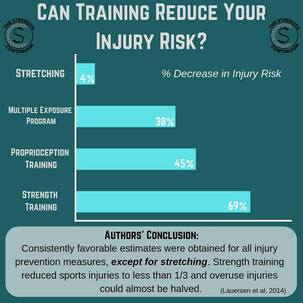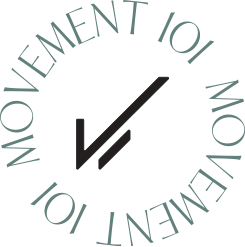|
Dealing with back pain is a debilitating and frustrating existence; our daily lives can be dominated by either the fear of pain or coping with flare-ups.
The complex nature of backs and the unpredictability of treatment and management of back pain has led to a multitude of myths floating around, some of which were based from what the medical profession understood at the time. Thankfully, over the last decade, the understanding of backs and their relationship with injury and pain has improved immeasurably – yet unfortunately many of these myths persist. Demystifying back pain and how to beat it 31/3/20192 Comments Dealing with back pain is a debilitating and frustrating existence; our daily lives can be dominated by either the fear of pain or coping with flare-ups. The complex nature of backs and the unpredictability of treatment and management of back pain has led to a multitude of myths floating around, some of which were based from what the medical profession understood at the time. Thankfully, over the last decade, the understanding of backs and their relationship with injury and pain has improved immeasurably – yet unfortunately many of these myths persist. Unpicking the myths of back pain MYTH #1 – Moving will make my back pain worse What used to be the perceived wisdom of bed rest has now been widely proven to actually hinder the recovery process and extend recovery times. Returning to movement as soon as possible has been shown to not only speed up recovery but also hugely reduce the recurrence of the pain. (1) MYTH #2 - I need to avoid exercise, especially weight training We now know that exercise is the best form of treatment for both acute and chronic lower back pain. Interestingly, every study shows that there is no type of exercise that is better or worse for treatment giving you the freedom to do whatever form of exercise you enjoy and can tolerate. (2) MYTH #3 - I need a scan to pinpoint and diagnose my problem What used to be considered an essential diagnostic tool CT & MRI scans have now been proven to be fairly ineffectual in providing accurate diagnosis of lower back pain. While in certain specific cases scans can provide useful, in many the results are irrelevant to the cause and nature of the pain. (3) MYTH #4 - Pain is a warning of damage How every individual experiences pain is as unique as a fingerprint and is rarely in proportion to the injury sustained. We each process and experience pain in a completely unique way that is affected by numerous factors, none of which are linked to the severity of the injury. (4) The hidden causes of back pain While the causes and contributing factors for back pain are vast and far too broad to make discussion relevant, what is of use is the research and studies into the factors that determine and influence the high rates of recurrence of back pain in sufferers. Crucially, this comes down to paths of treatment. A study by the Oregon Health and Science University published in the British Medical Journal (5) into prescribed opiate use for users suffering lower back pain. While the study acknowledged the analgesic effect on acute back pain, the study found no evidence of any benefit for those suffering from chronic back pain. In fact, the evidence points to pain medication giving little relief to patients and compared to alternative treatment, may actually exasperate the problem. Without placing the emphasis on patient led recovery through exercise and strength building, pain killers can often deceive the patient into not properly managing their pain and recovery, prolonging their symptoms and hugely increasing recurrence of the pain – the wrong treatment path can actually be the cause of your pain. The 3 simple steps to regaining your independence and taking control of your back pain It’s very easy to allow back pain to take over and dictate how you live your life. The debilitating pain makes clear planning and a positive outlook a hard place to get to. However, these three steps are the key to turning your life around and empowering you to live your life on your terms. 1. Motion is lotion! Know that movement and exercise is the key to recovery and reducing flare-ups and recurrence of your pain. There’s a reason that physios and doctors keep repeating the phrase motion is lotion! 2. Stop masking the issue Understand that purely treating your symptoms is a shortsighted approach that will cost you money and not solve your pain or give you any long-term solutions. We now know that effective treatment involves exercise and building up strength, pain medication may or may not offer you temporary relief in what becomes a constant cycle of pain and flare-up. 3. Plan your attack Get an effective plan of rehabilitation and growth from a physiotherapist to safely end your cycle of injury and build yourself an effective strengthening plan that works best for you. All the medical evidence shows that exercise and strengthening has the best short and long-term results for patients with both acute and chronic back pain. Looking to the future: What will my back cope with without recurring injury Here’s the thing, the more back strengthening you do, the more your back will cope with. The traditional thinking of treating back pain of rest and medication actually served to make patients far more susceptible to further injury. A carefully executed plan of exercise and strengthening will see you able to take part in the most rigorous of activities, even a high impact sport such as rugby. In fact, a study conducted by South Africa Rugby (6) on the impact of lower back pain on elite players found that of all treatment, exercise was by far the most effective and recommended that in order to combat recurrences of injuries, players should follow a physio led training programme of core stability and strength training. Notes and References: 1. http://www.nhs.uk/Conditions/Back-pain/Pages/Treatment.aspx 2. https://www.spineuniverse.com/wellness/exercise/weight-lifting-back-pain 3. http://www.spinesurgeons.ac.uk/patients/patient-information/the-spine-and-mri-scanning 4. http://bjsm.bmj.com/content/early/2017/07/12/bjsports-2016-097383 5. http://www.bmj.com/content/350/bmj.g6380 6. http://www.sarugby.co.za/boksmart/pdf/ BokSmart%20Lower%20back%20and%20core%20paper.pdf 7. https://www.epsom-sthelier.nhs.uk/centre-of-pain-education 8. http://www.sciencedirect.com/science/article/pii/S1466853X16000328
If you happen to have an office job, it can’t have escaped your notice that sitting has been shown to be associated with a variety of chronic health conditions. Office jobs are one the most common forms of employment in the developed world, so here are some tips to help you stay healthy when sitting all day.
Move more often: Sitting itself and the posture you find yourself in isn’t as bad as simply being still for hours on end. An expression in physiotherapy is ‘the best posture is your next posture’. This means that, above all, movement is the best thing for your body and those in office jobs can find themselves becoming very still while focused on the next deadline. Set a quiet alarm to remind you to move or change positions every 20 minutes. Getting up for phone calls and walking over to see colleagues when you have a question is a great way to break up your sitting time. Reverse your posture: While not moving is definitely the worst aspect to prolonged sitting, the postures we often adopt while sitting can also be problematic. Sitting with a flattened lower back, hunched neck and slouched shoulders is the posture that requires the least energy to maintain and is often the one we sink into in a long day. A slouched posture can lead to shortened hamstring, hip flexor and pectoral muscles. If you are spending large amounts of time sitting, it’s important to take time every day to adopt the opposite postures and keep your body flexible. This means moving into thoracic and lumbar extension, stretching your shoulders and extending your hips. Here are a few stretches you can do every day while seated that will help to reverse your posture Try to do these stretches every few hours during a working day. 1.Chest stretch Sit forward, clasp your hands behind your back and lift your arms towards the ceiling. You should feel a stretch at the front of your chest. Look up slightly to increase the stretch. You should not feel any pain or tingling in your arms. Hold for 30 seconds and repeat. 2. Seated hamstring stretch Perch on the edge of your seat and straighten one leg out in front of you. Lean forwards at your hips, keeping your back straight. You should feel a gentle stretch at the back of your thigh. If you feel the stretch behind your knee or into your calf, let your ankle relax, and let your foot drop towards the floor. Hold the stretch for 20 second then swap legs, repeat this stretch with each leg twice. 3. Chin Tuck Sit up in your chair so your bottom is at the back of your seat and your lower back is supported. Relax your shoulders and gently tuck your chin in, imagine you are holding a soft ball under your chin and are slowly squashing it. You should feel a gentle stretch at the top of your neck. Hold for 20 seconds, release and repeat. Thread the Needle One of my favourite thoracic mobility stretches is thread the needle. It's a really helpful exercise when you get neck stiffness and back stiffness to loosen up the middle area of your back. All you need to do is: - Place your knees apart, hand on the mat and shoulders over the hands. - Take 1 hand and thread it through like a needle, then twist your spine around. - Placing the upper arm onto the mat, lowering your head, relaxing and breathing in, you can use the other arm on the mat to push through and try to wind the thoracic section even further. - Breathe in and out and then push yourself back up and repeat on the other side. Perform this exercise a few times on each side as long as it feels good and then you will feel pretty stretchy. Stretching has long played an important role in the world of sport and fitness, with many athletes stretching religiously before and after exercise in hopes of preventing injuries. Lately, this practice has been called into question with many people wondering if stretching really makes a difference to athletic performance. The answer, like most things, is not black and white, as we explore a little in this article. A brief introduction to stretching Stretching is a type of movement that increases flexibility by lengthening muscle fibres to the end of their range. Stretching before and after exercise has been thought to reduce the risk of injury, improve athletic performance and reduce muscle soreness after exercise. The two most common types of stretching are static and dynamic stretching. Static stretching is when you lengthen your muscle and then hold that position for a period of time. Dynamic stretching uses movement and momentum of the body to stretch muscles to their end range, without holding the stretch at the end.  What does the research say? Some research has suggested that static stretching before an activity can actually reduce power, strength and performance. However, these reductions were shown to be minimal and not noticed at all if the stretches were held for less than 45 seconds. It has also been found that stretching does improve flexibility but only for a short period of time. A few minutes after stretching, your joints move further, and with less resistance, so you may have improved flexibility immediately after stretching. Why stretch at all? One thing that is undeniable is that stretching feels great, with many people feeling more relaxed and reporting a rush of endorphins after a good stretching session. It is also difficult to test the long-term effects of stretching specific muscles showing abnormal tightness. A long-term static stretching routine will improve your overall flexibility, and this is thought to help prevent injuries, although the evidence is inconclusive. If you’re an athlete, the decision to stretch or not can be a personal one. A warm-up prior to intense exercise that includes some form of dynamic stretching is generally recommended for reducing injury risk, but of course is no guarantee. Strength and balance training may have a far greater impact on reducing injuries in the long term. Your physiotherapist is able to guide you on the best stretching advice for your individual activity and they may be able to identify some areas where improving your flexibility will help to reduce injuries and improve performance.
So today I’m going to explain to you what belly separation is, or you may have heard of it as diastasis recti or diastasis. This referring to your abdominal muscle which start right up here in your sternum, in between your ribs and all the way down to your pubic bone. So, this goes right down the front of our body and during pregnancy these muscles have to stretch quite a bit to make room for a growing baby. So, they elongate this long way so that the belly can move outwards and sometimes towards the end of pregnancy, the skin or the body tries to create more space and the muscles start to move more outwards apart from each other. And this is what the belly separation is referring to. So that’s a natural part of growing a human and sometimes they all come back together naturally post natal, however some people struggle for whatever reason to get those muscles to come back together. Now you don’t always know that you have it. Its not always picked up at GP check-ups so we do usually advise you seek a women’s health physio’s advice before returning to sport just to check you’re doing the right thing to help support your core and work those muscles correctly. Let us know if you have any questions.
Targeting your pectoral muscles is important if you are a desk worker or sit a lot generally as they will tend to shorten and become tight. We have two pec muscles that attach from the sternum and front ribs to the top of the arm or humerus.
To stretch the pectoral muscles, stand by the side of a wall or doorway and have your arm positioned at about 90 degrees. Then take a small step and lean forward. Hold that pressure and turn to the opposite side until you feel the stretch across your front chest. To stretch in lying, first lie on your side with your top leg bent and bottom leg straight. Lift your arm up to the sky and then twist backwards and allow your arm to come close to the floor. Keep your elbow bent in this position and hold the stretch for 30 seconds. |
AuthorWrite something about yourself. No need to be fancy, just an overview. Archives
April 2024
Categories |
|
|
|


 RSS Feed
RSS Feed









